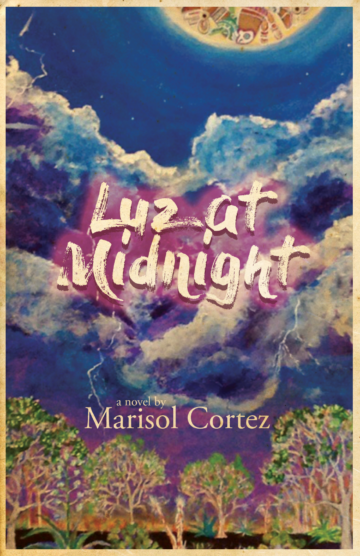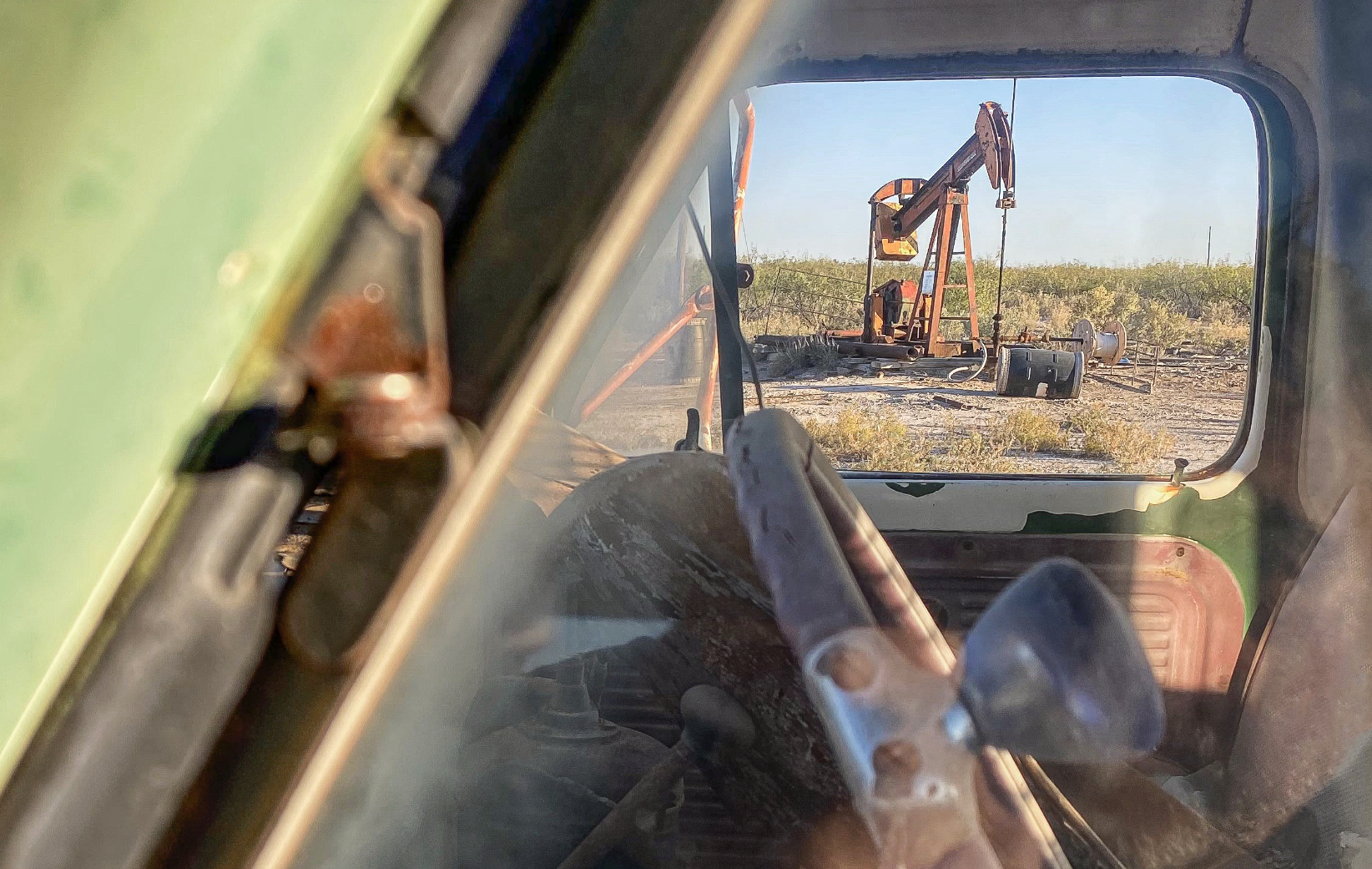
‘Luz at Midnight’ Reimagines Blackouts, Polar Vortexes, and Environmental Justice in San Antonio
A recent novel offers a South Texas story for organizers, scholars, poets, and lovers.

Above: Native Texan Marisol Cortez released her debut novel "Luz at Midnight" in December 2020.
In the not-too-distant future, San Antonio is scrambling to go carbon neutral. They’re turning refineries into apartments and closing coal plants to build mixed-use developments. But progress is slow. Poor people are being displaced, left vulnerable in a time of increasingly frequent heat waves and extreme weather events. All the while, profiteers are seizing on the vacuum left by the fossil fuel industry to vulture minerals from the South Texas landscape. In an unequal transition away from fossil fuels, could this be the future?
In her debut novel, San Antonio-based author Marisol Cortez teases out this scenario, documenting environmental politics in San Antonio through a lens that’s half-real, half-hypothetical. From small South Texas publisher FlowerSong Press, Luz at Midnight unfolds from the vantage point of Chicano community activists including the soft-spoken but steadfast protagonist Citlali Sanchez-O’Connor (Lali for short). The story follows Lali as she works long hours for an environmental nonprofit between academic jobs and finds herself in a whirlwind of utility rate hikes, political theatre, and artistic grassroots protest. Lali’s job is organizing actions at City Council meetings and canvassing for signatures to fight a utility rate hike after a huge storm—a storm that resulted in “rolling blackouts” (hint: they weren’t really rolling) in lower-income neighborhoods. Cortez says she based these scenes on the Texas polar vortex of 2011, but as I read her book in my darkened Austin home in February, they felt shockingly prescient. Her idea of rare earth mines in South Texas, too, is also partly coming true: One of the first rare earth processing facilities in the United States is opening in Hondo.

“I wanted to make up a speculative but entirely plausible near-future scenario that would allow me to take elements from struggles I had actually been involved in,” Cortez told the Observer, noting that she wrote most of the book during the Obama years, when federal legislation to push cities to decarbonize first seemed possible. The premise of the book is engaging, but it’s not a plot-heavy read: Cortez’s writing style is experimental and sometimes dense, more likely to include a mini-essay than a moment of high drama. She often riffs on intriguing concepts that would be better categorized as cultural studies than fiction, from recounting the Hispanicization of Ya Gna Wena, the traditional name given to the San Antonio River by the Carrizo/Comecrudo tribe, to musing on the parallels between academic study and monastic life.
By exploring the poetics of land, labor, and social movements in more descriptive terms, Luz offers a wealth of insights on environmental justice in San Antonio. Rich, lyrical prose constantly refers back to power itself, calling our attention to the forces that shape us: “Something in me had broken open—like the hidden gas line beneath that old refinery, severed by a hapless construction crew, tripping an explosion that spelled out the end of an era. … For some reason I didn’t understand, it was Joel who had that power, who awakened a longing so wide and deep it crashed to my surface like oil or water, creating a river unaffordable, a shallow sea.”
In the thick of Lali’s fight against the utility rate hike, she’s compelled by a powerful desire toward independent journalist Joel Champlain, who uncovers city scandals around a controversial new mining practice called “gleaning.” Desire is a central theme; Luz invites us to treat it with critical attention. “Somewhere, someone had written that it is desire that powers the universe,” Cortez writes early on, calling the mother of all things “longing herself, the longing to be.” A respect for women’s stories about the liberating nature of desire, sexuality, and romantic love makes the book feel like a work of feminist theory at times, too. As the novel meanders along its path, we meet such fascinating characters as the radical nun Sister Soledad, who says erotic love shook her open to liberation theology and political struggle.
Joel and Lali and the rest of the “movement people”—the term favored by Cortez for the loose network of activists and volunteers they associate with—fight several battles at the city level. Cortez honors their often-unsuccessful struggles against problems understood to reflect centuries of history: One short essay places “contemporary power relations in San Antonio within a historical timeline that stretches back to the city’s roots in Spanish colonial rule,” and traces how predominantly wealthy, white residents have long controlled city politics. When an older Chicana activist from the fictional group VAMOS teaches Lali how to canvass, she ties utility rate hikes back to fights decades earlier against unequal, segregationist budget allocations for streets and drainage. “Why do you think we’re called VAMOS, anyway!” the elder says. “We’re viejas [old ladies] against more of the same!”
By leaning into her genre-bending writing style, Cortez creates something that feels like an epic poem at times and archival research or oral history at others. She draws from a local’s lifelong knowledge of San Antonio, from neighborhood lore, and from political history, such as in an essay on former San Antonio mayor Henry Cisneros, the first Hispanic mayor of a major U.S. city, dubbed “King Henry from the Block.” At other times, though, the writing offers too few details. Especially at the beginning: Long sections on nature and abstract forces are hard to latch onto, and linger in a hazy, imprecise realm for too long. Still, this is a small price to pay for a wildly ambitious work. On the whole, the book, with its unexpected rhythms, is captivating.
Luz at Midnight revels in the particularities of San Antonio to uncover the very nature of extractive energy production, of capitalism and colonialism. The book argues that these things form the root of our problems, not the solution. Rather than continuing to invest in “a kind of development that impoverishes our communities,” and turning to technological solutions, Cortez shows that there has to be another way. Luz doesn’t exactly offer an optimistic view—as organizers know, you fail and you fail and you fail in the fight for environmental and economic justice—but it does help us remember everything that many neglected communities still have in abundance: ancestral knowledge, love, passion, resolve, and longing, all of which offer their own kind of power.


